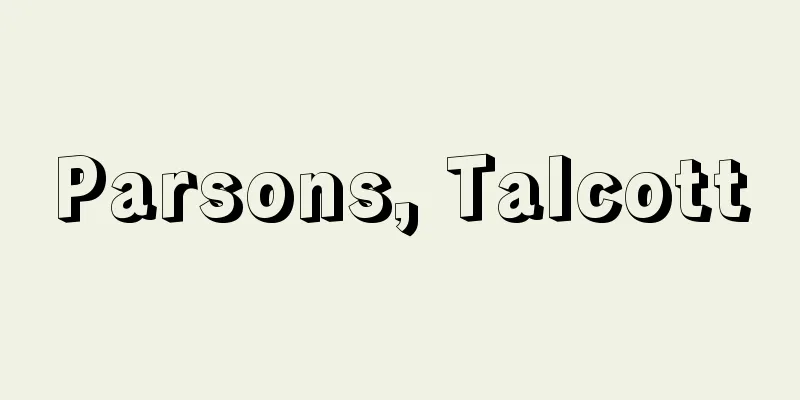Depression

|
Also called depression. It is similar to the depressive state of manic depression, but refers to cases where a person has experienced depression at least once and then does not enter a manic state. When the psychological cause is known, it is called neurotic depression, and when the cause is unknown, it is called endogenous depression. The main symptoms are emotional melancholy and suppression of motivation. In terms of emotions, symptoms include low mood, anxiety, pessimism, and self-deprecation. In terms of motivation and actions, symptoms include the inability to make decisions and a state of being suppressed and suffering. In terms of thoughts, symptoms include congestion of thoughts and lack of coherence. One of the characteristics is the diurnal variation in the feeling of melancholy, which is severe in the morning and improves from the afternoon to the evening. Other symptoms include feelings of guilt, remorse, suicidal tendencies, and delusions. Physical symptoms include insomnia, loss of appetite, constipation, and irregular menstruation. When no mental symptoms appear and only physical symptoms are complained of, it is called masked depression. The course of the disease usually goes into remission within a few weeks to a few months, but it can last for several years. In addition, depression that first appears after the age of 45 and is characterized by agonizing agitation is specifically called presenile (degenerative) depression. → Related topics: Parenting neurosis | Selective mutism | Mood disorders | Borderline personality disorder | Cosmetic therapy | Antidepressants | Behavioral therapy | Sandwich syndrome | Continuous sleep therapy | Mania | Electroshock therapy | Panic disorder | Maternity blues | Melancholia | Depersonalization | Lobotomy Source : Heibonsha Encyclopedia About MyPedia Information |
|
抑鬱症とも。躁鬱(そううつ)病の鬱状態に似ているが,1回以上鬱病を経験したのち,躁状態にならない場合をいう。心理的な原因がわかる場合を神経性鬱病,原因のわからない場合を内因性鬱病といい,感情の憂鬱と意欲の抑制を主柱とする。感情の点では気分沈滞,不安,厭世(えんせい),自己卑下感など,意欲と行動の点では決断実行の不能,抑制されて苦しむという状態など,思考の点では思考渋滞し,話のまとまりが少ないなどの症状が認められる。憂鬱感は午前中にひどく,午後から夕方にかけて軽快するという日内変動が特徴の一つで,そのほか罪業感・罪責感や自殺志向,妄想などがあり,身体的にも不眠,食欲不振,便秘,月経不順などがある。精神症状が現れず,もっぱら身体症状だけを訴えるものを仮面鬱病という。経過は数週間から数ヵ月で寛解するが数年にわたるものもある。なお45歳以降に初発し苦悶(くもん)性興奮を特徴とするものを特に初老期(退行性)鬱病と呼んでいる。 →関連項目育児ノイローゼ|緘黙症|気分障害|境界例|化粧療法|抗鬱剤|行動療法|サンドイッチ症候群|持続睡眠療法|躁病|電気ショック療法|パニック障害|マタニティ・ブルー|メランコリー|離人症|ロボトミー 出典 株式会社平凡社百科事典マイペディアについて 情報 |
Recommend
Secret language - Ingo
It is a special language used among a limited num...
Tlaxcala (English spelling)
Its official name is Tlaxcala de Xicohténcatl. It ...
Kita Roppeita Noushin
1874-1971 A Noh actor from the Meiji to Showa per...
nuptial plumage
…In birds, the males often wear very flamboyant f...
Solarium
…a room on the upper floor of a medieval English ...
central heating
...to heat a room. There are individual heating, ...
External virial - virial
…Using the fact that the change in momentum is eq...
Mespilus germanica L.
A deciduous tree of the Rosaceae family used as a ...
Italian Confederation of Workers' Unions - Italian Confederation of Workers' Unions
...Cisielle in local pronunciation. It is the lar...
Kansuge - Kansuge
A perennial plant of the Cyperaceae family (APG c...
Bigmouthed fish - Ooguchi Shugyo
Poet. Born in Nagoya. His given name was Taiji. S...
Architectonica maxima (English spelling) Architectonicamaxima
…[Tadashige Nabe]. . … *Some of the terminology t...
Hiiumaa (island) (English spelling)
An island in the northwest of the Republic of Esto...
Tenryu [city] - Tenryu
An old city in western Shizuoka prefecture. It was...
Toki [city] - Toki
A city located on the Tono Hills in the southeast ...






![Montana [State] - Montana](/upload/images/67cd085622e1a.webp)


